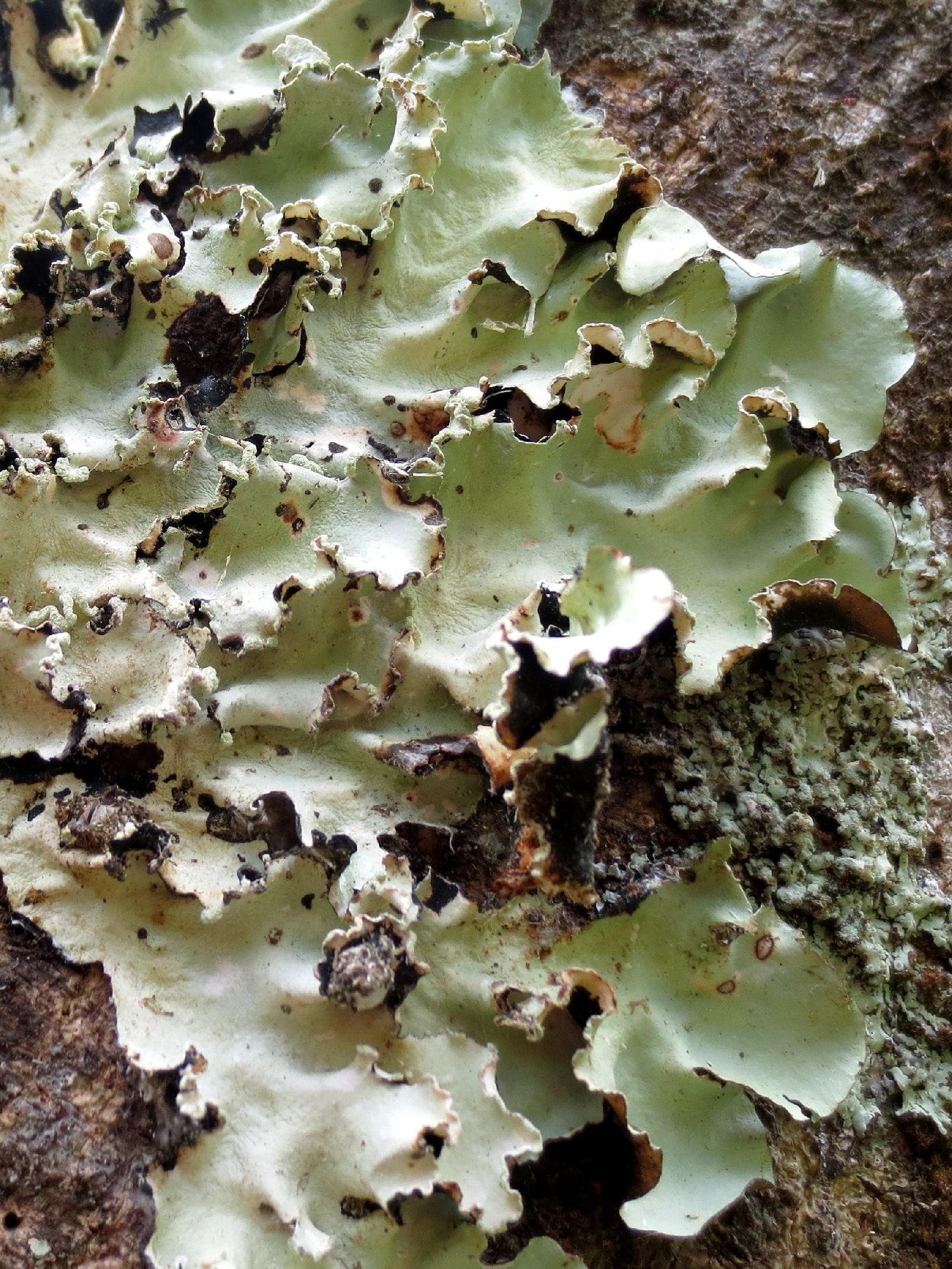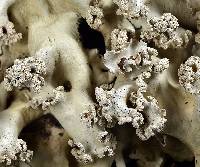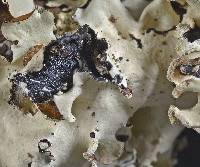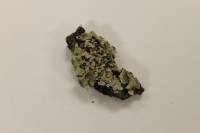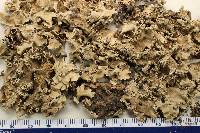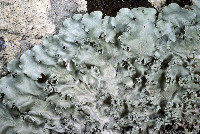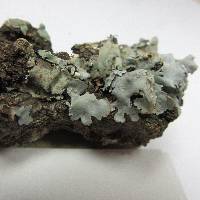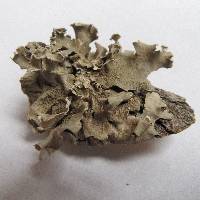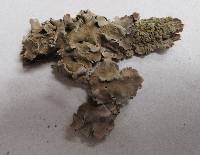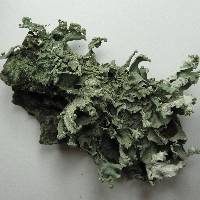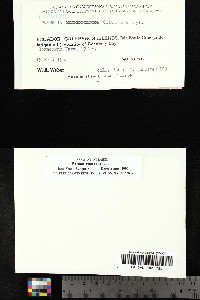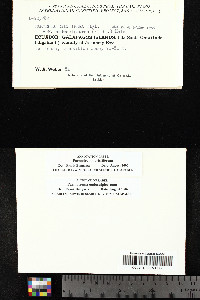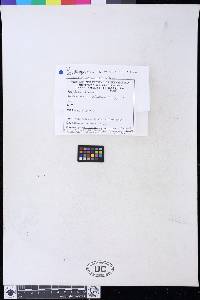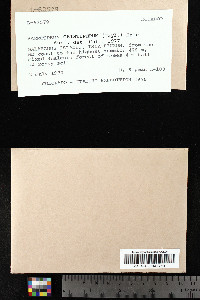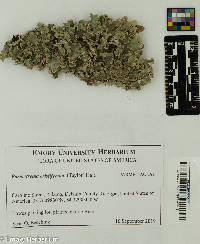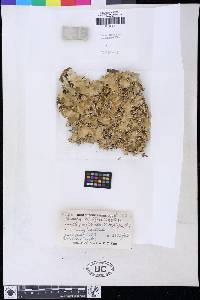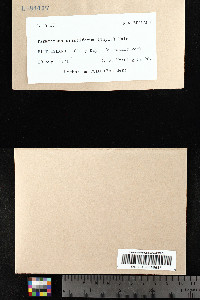
- Home
- Search
- Images
- Species Checklists
- US States: O-Z >
- US National Parks
- Central America
- South America
- US National Parks
- Southern Subpolar Region
|
|
|
|
Family: Parmeliaceae
[Parmelia cristifera Taylor, moreParmelia cristifera f. cinerata Zahlbr., Parmelia cristifera f. cristifera Taylor, Parmelia cristifera f. pallida Räsänen, Parmelia cristifera var. abissinica Sambo, Parmelia cristifera var. cristifera Taylor, Parmelia perforata var. ulophylla Meyen & Flot.] |
MycoBank no. 343031 Type: India. West Bengal: Calcutta, Wallich, N. s.n. (lectotype: FH!, designated by Berry 1941). Description. Thallus corticolous, rarely saxicolous; upper surface whitish gray to ivory, shiny to ± dull, epruinose, emaculate, Chemistry. Cortex with atranorin [P+ yellow, K+ yellow, KC–, C–, UV–]; medulla with salazinic acid [P+ deep yellow, K+ yellow, soon turning blood-red, KC–, C–, UV–]. Ecology and distribution. Africa (Hue 1899; Hale 1965; Krog & Swinscow 1981), Asia (Taylor 1847; Hue 1899; Vainio 1909; Hale 1965; Chen et al. 2005; Divakar & Upreti 2005), Oceania (Hue 1899; Merrill 1909; Hale 1965; Elix 1994; Louwhoff & Elix 1998), North America (Merrill 1909; Berry 1941; Hale 1965; Brodo et al. 2001; Egan et al. 2016), Central America (Hue 1899; Hale 1965), South America (Hue 1899; Hale 1965). In South America cited from Bolivia (Kukwa et al. 2012), Brazil, British Guiana, Colombia, Ecuador (Galapagos), Peru, Suriname and Venezuela (Hale 1965; Spielmann 2009; Marcelli & Benatti 2010). In Galapagos first reported by Dodge (1936) and subsequently by Weber (1966, 1986), Elix & McCarthy (1998) and online (Bungartz et al. 2016). Together with P. endosulphureum and P. tinctorum, P. cristiferum is among the most common of all Galapagos Parmotrema species. All three species are widely distributed and have been collected in all vegetation zones, in many different habitats. Parmotrema cristiferum has most commonly been found in the transition zone and humid zone, only rarely in the dry zone; most specimens are from bark, less frequently wood or rock, on a variety of different endemic, native and introduced trees and shrubs, both at exposed and ± sheltered sites. Notes. In Galapagos, P. cristiferum is one of the most common gray sorediate, emaculate species. Like the newly described P. erectociliatum it contains salazinic acid in its K+ blood-red medulla. The two species nevertheless display distinctly different morphology, with P. erectociliatum forming long, conspicuous cilia, an underside almost entirely blackened throughout, and the thallus lobes distinctly delimited by a blackened edge. Nash, T.H., Ryan, B.D., Gries, C., Bungartz, F., (eds.) 2002. Lichen Flora of the Greater Sonoran Desert Region. Vol 1. Thallus: foliose, adnate to loosely adnate, 3-15 cm in diam., lobate lobes: subirregular, elongate, slightly imbricate, plane, separate, 4-20 mm wide; apices: rotund, sometimes deeply crenate, elacinate, ciliate; cilia: sparse to frequent, 0.3-2.0 mm long upper surface: gray, smooth, dull, emaculate soredia: granular, common, in linear, submarginal soralia that are often on lateral, subascending lobes; isidia and pustulae: absent medulla: white with continuous algal layer lower surface: black with brown naked zone peripherally, centrally rhizinate; rhizines: scattered, simple Apothecia: very rare, substipitate, up to 7 mm in diam.; margin: sparsely sorediate; disc: brown, imperforate ascospores: ellipsoid, 22-30 x 13-15 µm Pycnidia: not seen Spot tests: upper cortex K+ yellow, C-, KC-, P-; medulla K+ yellow turning deep red, C-, KC-, P+ orange Secondary metabolites: upper cortex with atranorin and chloroatranorin; medulla with salazinic acid (major) and consalazinic acids (minor). Substrate and ecology: usually on trees in open habitats, rarely on rocks World distribution: pantropical and pantemperate Sonoran distribution: southern California, Baja California Sur and Sonora. |
|
|
|

